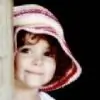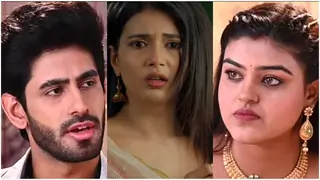TABLA - and Gharanas of Tabla: by Arnab Chakrabarty
Tabla is the term used for a set of hand drums from India. Incidentally, it is also the individual name of the higher pitched, smaller drum of the set (usually played with the right hand and also known as dayan). The other (bass) drum is known as bayan (lit. left).
There are many stories about the origins of Tabla. They are all, however, difficult to authenticate and therefore, best described as legends and myths. But one might be interested in knowing that many musicians attribute the origins of the tabla set to a single two-faced, single barreled drum (some say it is the pakhawaj, and others claim it could have been an earlier, now-extinct drum).
Most often, tabla is used to accompany a vocalist or instrumentalist in the performance of Hindustani classical music, and until this century, solo tabla was almost absent from the concert stage, being confined to congregations of tabaliyas (tabla players) and sarangi players.
It was largely due to the efforts of great tabla players of this century, Ustad Ahmed Jan Thirakwa, Pandit Jnan Prakash Ghosh, Pandit Nikhil Ghosh and Ustad Alla Rakha, that tabla came to be recognized and respected as a solo instrument capable of being a centre-stage feature.
Ahmedjan Thirakwa was an omnibus tabla player and had descended from the Farrukhabad Gharana (lit. lineage) of Ustad Munir Khan. This gharana is said to have been founded by Haji Vilayat Khan who was a tabla player from the Bareilly/Farukhabad region, and who blended the regional style of his ancestors with material from the already-established Lucknow school, which he had received as dowry in his marriage to the daughter of Ustad Miyan Bakshu of that gharana. Jnan Ghosh, too, was a representative of the Farrukhabad Gharana and was a disciple of Ustad Masit Khan Sahib.
There are six recognized tabla gharanas, these being Farrukhabad, Delhi, Lukhnow, Punjab, Benares and Ajrada.
Reverting to Jnan Prakash Ghosh and the Farrukhabad Gharana, this Gharana proliferated with a large number of quality tabla players whom Jnan Babu trained and mentored. These include Shankar Ghosh, Nikhil Ghosh, Kanai Dutta, Shyamal Bose, Gobinda Bose, Swapan Shiva (who also learnt from the legendary Ustad Keramatulla Khan), and among the younger generation, Anindo Chatterjee , Sanjoy Mukherjee, Debasish Sarkar, Bikram Ghosh, Mallar Ghosh. Among other contemporary exponents of the Farrukhabad Gharana are many students of Jnan Babu's students such as Nayan Ghosh (son of Nikhil Ghosh), Shubhankar Banerjee (disciple of Swapan Shiva), Aneesh Pradhan (disciple of Nayan and Nikhil Ghosh), Tanmoy Bose (disciple of Kanai Dutta and Shankar Ghosh). Among the most recent wave of Farukhabadi tabla players to have made their presence on stage are Mayookh Bhaumik (d/Sabir Khan), Biplab Bhattacharya (d/Shankar Ghosh), Soumen Sarkar (d/ Anand Shankarrao Bodas), Satyajit Talwalkar (s/Suresh Dattatreya Talwalkar), and Abhishek Basu (d/Bikram Ghosh).
It would be worthwhile to mention that Anindo Chatterjee reigns supreme as a favourite amongst all listeners of solo tabla. Anindo Chatterjee's command over his instrument and his massive wealth of repertoire is matched by few.
Technically, Sabir Khan is the "khalifa", or leader, of this "clan", since he is a direct grandson of Masit Khan.
Benares Gharana is one of the two oldest establishment of tabla gharanas, dating back almost three centuries. The prominent masters of the earlier part of this century in this gharana have been Ram Sahai (the founder), Pandit Kanthe Maharaj, Pandit Vacha Maharaj, Pandit Baldev Sahai and Pandit Vikku Maharaj. The more recent masters of this style are Pandit Kishen Maharaj (disciple of Pandit Kanthe Maharaj), Pandit Samta Prasad or Gudai Maharaj (disciple of Vacha Maharaj, Vikku Maharaj and Baldev Sahai), Pandit Mahadeo Prasad Mishra (disciple of Baldev Sahai) and Pandit Anokhelal Mishra (Baldev Sahai), and Pandit Sharda Sahai (son of Baldev Sahai).
Some of the remarkable exponents of the contemporary times are Kumar Bose (a disciple of his father Biswanath Bose, Mahapurush Mishra (Anokhelal Mishra), Sukhwinder Singh Namdhari (Nihal Singh and Kishan Maharaj), and Sandeep Das (Kishan Maharaj).
Punjab Gharana is probably the youngest of all six. It was founded by Saddu Hussain Bux who taught Fakir Bux who in turn, was the mentor of Kader Bux and Feroz Khan. Now, Jnan Babu also augmented his Farukhabadi taleem by taking lessons from Feroz Khan.
Shaukat Hussain, a disciple of the aforementioned Kader Bux, taught Sattar Tari Khan, who is one of the finest accompanists to ghazal and other forms of "light classical" music. Punjab Gharana was made famous throughout the world by Allarakha, the best known disciple of Kader Bux and oe of the most celebrated tabla players of all time. The most famous tabla player in the world today is Zakir Hussain, the son and disciple of Ustad Alla Rakha. His technical wizardry and great sense of music have seen him scale heights which elude the ordinary musician's wildest dreams. Zakir also studied with Ahmedjan Thirakwa, and via that connection, also represents Farukhabad. Other important Punjab players are Yogesh Samsi (Alla Rakha), Ashok Godbole (Alla Rakha), Anuradha Pal (Zakir Hussain), and Aditya Kalyanpur (Zakir Hussain).
Lucknow Gharana is an offshoot of Delhi Gharana that proliferated in Bengal and later in the Deccan. The foremost figures of this century were Ustad Afaq Hussain Khan and Ustad Sheikh Dawood Khan. Among prominent disciples of this gharana are Anindo Chatterjee (through his discipleship of Ustad Afaq Hussain Khan), late Dr. Santosh Krishna Biswas (disciple of Khalifa Wajid Hussain Khan) and Pandit Swapan Chaudhuri (disciple of Santosh Krishna Biswas). This style is known for its clarity of right hand bols and crisp drum-roll (rela) playing. Swapan Chaudhuri and Shabbir Nisar constitute the senior guard of this gharana today, and are ably supported by the likes of Uttam Chakrabarty and Abhiman Kaushal.
Delhi gharana is perhaps the oldest tabla baaj. It was founded by many families in and around the Delhi-Lucknow-Barreily belt. Among the most remarkable early exponents was Chhote Kale Khan who taught Gamme Khan, the guru of Ustad Inam Ali Khan, an ancestor of the great Ustad Latif Ahmed Khan who died in the early eighties. A parallel line is that of Chamma Khan and his renowned son Shafaat Ahmed Khan (famed accompanist of sarodiya Amjad Ali Khan). Pandit Chatur Lal learnt from Haji Mohammad Khan and Hafiz Miyan of Udaipur and later had "advanced training" from Pandit Ravi Shankar. His baaj is practiced by his nephew Shiv Narayan.
Ajrada gharana has almost lost all representation in the world today but for a handful of world-class tabla players such as Akram Khan, Ghulam Sarwar Sabri, Rafiuddin Sabri and Ramzan Khan. The earlier greats of this Gharana were Nattu Khan, Habibuddin Khan, and Bandu Khan. Interestingly, the Ajrada Gharana is closely linked to a few Sarangi lineages from in and around Delhi. In Bombay, a credible representative of this gharana is Bhanu Prasad Barot. Akram Khan is arguably the finest contemporary performer of this style.































